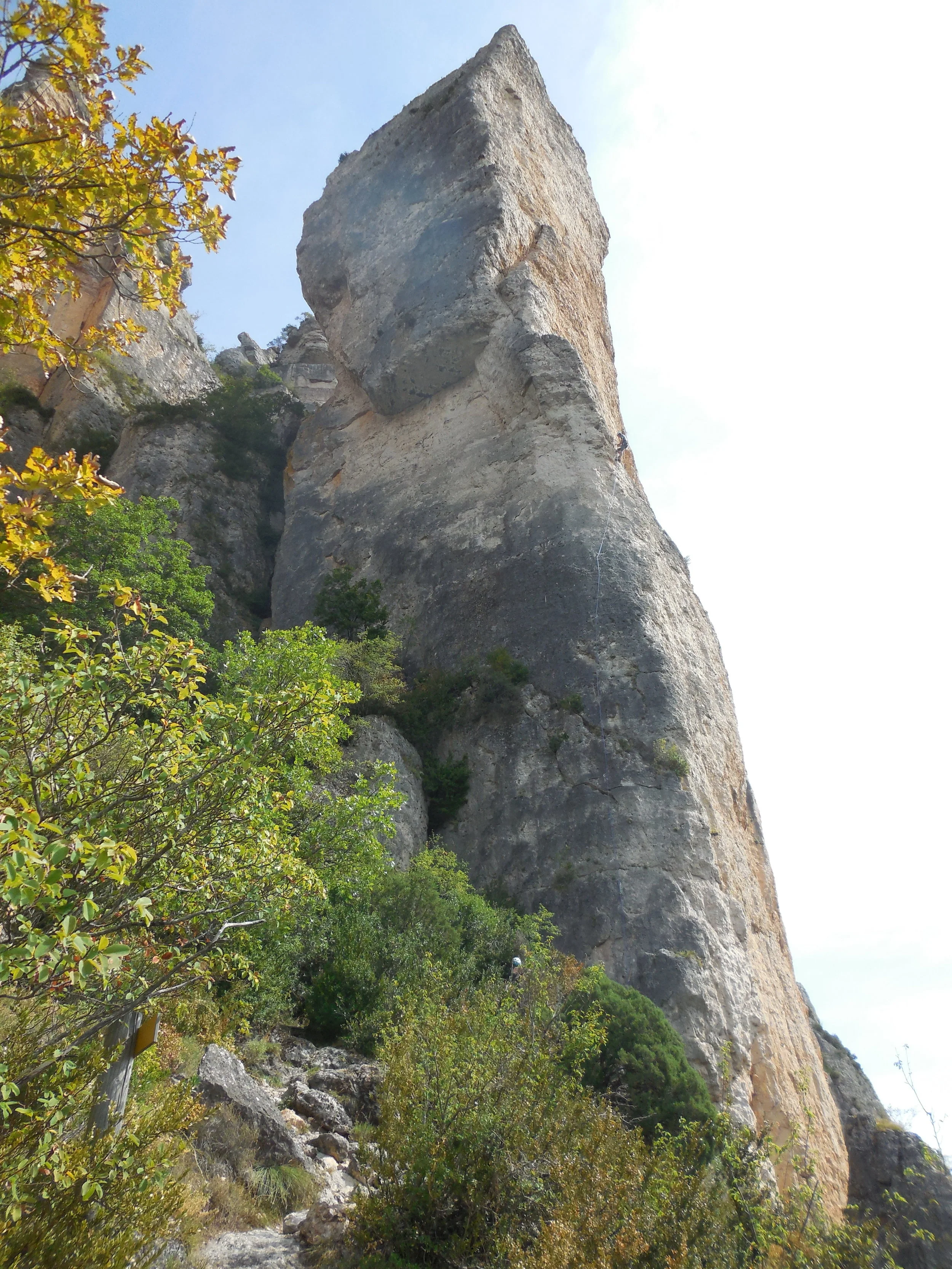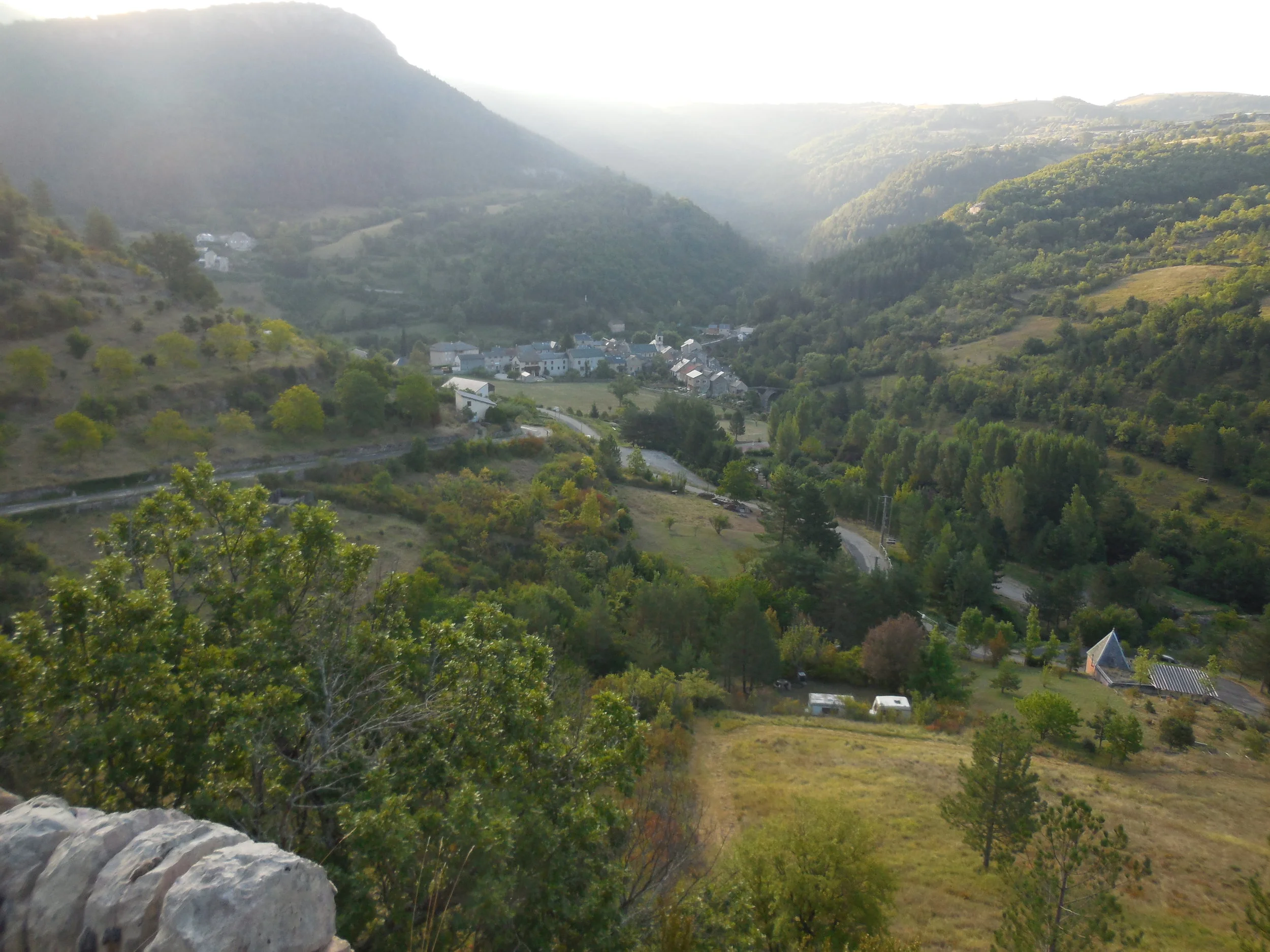The Tarn is Gorgeous
Les gorges du tarn, is, well, gorgeous.
All the tourist brochures and websites for this region, and those near it, describe the Tarn as beautiful, breathtaking, a must see – they ALL understate it. All of them. This place is stunning, especially early in the morning on a clear day. Sure, this is not Verdon, or Yosemite, or the Grand Canyon, or even the Grose, but they are all very special places. The Tarn – who’s ever heard of that.
At the head of the valley is Sainte Enimie, our destination for the day, one of the plus beau village de france (one of the most beautiful villages of France). Somehow we managed to end up staying in Meyrueis, a shabby tacky town at the head of the Jonte gorge, which is not mentioned in any tourist brochures.
The Cevennes is an area of elevated plateaus dissected by canyons and gorges. Two gorges, the Jonte and the Tarn, meet at Le Rozier, our starting point today. After the rigours of Mont Aigoual, a trip along a valley floor seemed appealing.
‘why do you bang your head against a wall?’
‘because it feels good when I stop’
And so it is with climbing long steep hills on a bike – it feels good when you stop. Even better than stopping though is shifting to a route that is flat or has mere gentle climbs, because then you get to feel fast.
We start early, compared to the French. The town is barely awake when we clip in and start the first gentle rise out of town, the gradient a very pleasant 1%-3% and once warmed up we easily sit on +30km/hr.
Within a kilometre from town the exclamations start: ‘look over there’, ‘look at that’, in every direction a sight to be seen. Steep hills dotted with rocky outcrops and limestone cliffs, up high rimming the gorge, at mid height in places, and often rising directly from the river. No single cliff is stunning in it’s own right, but as a collection the effect is impressive.
And below it all, twisting and turning, the Tarn. The Tarn is everything from every description ever written of a mountain stream; clear fast flowing water over a rocky bed; deep and dark on the bends, shallow and bubbling over the gravel races, running through short canyons with cliffs on either side, obscured in places by the trees that meet above it or with grassy fields as river banks. The Tarn has all these things. The water is crystal clear: incredibly so. From the road 50m above the river I can look down and see individual pebbles on the river bed. Where it pools the Tarn is a beautiful emerald green.
There is no need for the grim determination seen on Mont Aigoual, or Puy Mary, instead, the learnt pleasure of cycling: easy fluid cadence, swift movement, sweeping through bends, murmured conversation, scenic surprises round every turn. Up ahead, the road runs through a ubiquitous tunnel roughly cut through a spur of rock crossing the road. This first one, photographed, by the end of the ride, they are barely noticed.
Limestone in places can appear drab, offering none of the colour variety possible with sandstone. But no rock can match limestone for the incredible shapes formed in the cliffs, the variety along the Tarn continuing to astound. The monotone of the limestone enhanced by the shading created by the early morning light, with the occasional side valley allowing shafts of light to enter the gorge.
Running constantly with us, the Tarn. Once the eyes have absorbed each new scene, they return to the Tarn.
The Tarn is in the Cevennes, the Cevennes is in France, and what France has, beyond that which it is famous for, are villages. So the Tarn has villages, and the full range; growing, dying, pretty, decrepit, and some now resting as remains. The absence of traffic, of the need for navigation or technical descents provides freedom to think as we ride along, and I occupy my mind on this ride pondering what life was like when the remnant villages were lived in – why did people live here. It is very scenic but what makes the scenery spectacular would make the living difficult. There is evidence of agriculture long ago in the crumbling terraces above the villages but the soil cannot be good for growing and the winters are long and harsh.
All of this as we roll along at a nice clip, with Pam unwilling to believe that we are in fact constantly climbing such is the ease with which we pedal. After 20km I suggest to Pam that we extend the ride and make it a 100km day. By 30km my legs are gone and a rise above 3% slows me.
Reaching our destination, Sainte Enimie, we spend some time searching for the desired combination in a café - both croissants & hot chocolates – finding it eventually, we partake, and then reverse the journey, the impact of the scenery no less the second time.
For lunch, a croquet monsieur at Le Rozier, if you must know.
The numbers:
Distance: 72km
Height Gained: 1,640m**
** I struggle to believe the height gained figure as reported by Strava. Strava shows several cat 4 climbs, some with gradients >10%. We did nothing like that. There wasn’t a climb over 5%. Garmin course creator estimated the height gained at approx. 1,100m.



